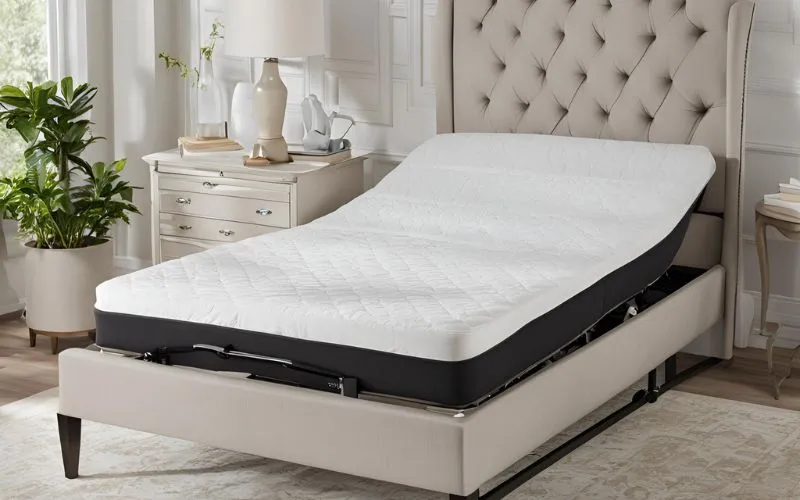Quick Fixes: Troubleshooting Excessive Noise in Adjustable Beds

Introduction
Adjustable beds are a popular choice for those seeking personalized comfort and support, but excessive noise can be a major nuisance. In this comprehensive guide, we will delve into the common causes of excessive noise in adjustable beds, the impact of noise on sleep quality, and the importance of addressing this issue promptly. We will also provide a detailed troubleshooting process to help you eliminate excessive noise and enjoy uninterrupted, restful sleep.
Understanding Excessive Noise in Adjustable Beds
Common Causes of Noise in Adjustable Beds
Common Causes of Noise in Adjustable Beds
- Loose Components:
- One of the common causes of excessive noise in adjustable beds is loose components such as bolts, screws, or connectors. Over time, these parts can become loose due to regular use, leading to creaking or squeaking sounds when the bed is adjusted. Regular inspection and tightening of these components can help reduce the noise.
- Worn Mechanisms:
- Another potential source of excessive noise is worn mechanisms within the bed frame. This could include worn-out motors or faulty wiring, which may produce disruptive noises during bed adjustments. Understanding the signs of worn mechanisms and addressing them promptly can minimize noise disturbances.
- Improper Weight Distribution:
- Improper weight distribution on an adjustable bed can also contribute to noise. When the weight is not evenly distributed, it can put additional strain on the bed’s components, resulting in unwanted sounds. Proper positioning and weight distribution can alleviate this issue and promote a quieter sleep environment.
Effect of Noise on Sleep Quality
The presence of excessive noise in adjustable beds can significantly impact sleep quality. Persistent noise can lead to disturbances during sleep, causing restlessness and decreased comfort. Disrupted sleep quality may contribute to daytime fatigue, irritability, and reduced overall well-being, underscoring the importance of addressing excessive noise for optimal sleep health.
- Excessive Noise and Sleep Disturbances
- Impact on Restlessness and Comfort
- Contribution to Daytime Fatigue and Irritability
Importance of Addressing Excessive Noise
Addressing excessive noise in adjustable beds is crucial for creating a tranquil sleep environment. By identifying and resolving the root causes of noise, individuals can enhance their sleeping experience and promote better overall sleep health. Taking proactive steps to eliminate excessive noise contributes to a peaceful and rejuvenating sleep environment, ultimately improving quality of life.
- Reducing Stress Levels: Excessive noise can lead to increased stress levels, disrupting the body’s ability to relax and unwind during sleep. Addressing noise issues in adjustable beds promotes a calmer, more soothing sleep atmosphere, reducing stress and improving mental well-being.
- Enhancing Sleep Quality: A quiet sleep environment is essential for achieving deep, restorative sleep. By addressing excessive noise, individuals can experience improved sleep quality, fewer disruptions during the night, and better overall sleep patterns.
- Supporting Overall Health: Quality sleep is integral to overall health and well-being. Addressing excessive noise in adjustable beds helps maintain a healthy sleep routine, improves cognitive function, and supports overall physical and mental health.
Troubleshooting Excessive Noise in Adjustable Beds
Step 1: Visual Inspection
Conducting a visual inspection of your adjustable bed is a crucial first step in troubleshooting excessive noise. A thorough examination will help identify any loose or damaged components that may be contributing to the issue.
Here are some key areas to focus on during the visual inspection:
- Frame and Structure: Check the bed frame and overall structure for any signs of wear, looseness, or misalignment. Pay close attention to the joints and connection points.
- Electrical Components: Examine the electrical components, including the motor, wiring, and connectors, for any visible signs of wear, fraying, or damage.
- Mechanical Fasteners: Inspect the bolts, screws, and other fasteners to ensure they are securely tightened. Look for any missing or damaged fasteners that may need replacement.
Once you have identified any areas of concern, take the necessary steps to address them. Tightening loose components and securing electrical connections are essential to eliminating unwanted noise during bed adjustments.
Step 2: Tightening and Lubrication
When it comes to ensuring the optimal performance and longevity of your adjustable bed, taking the time to tighten and lubricate its components is essential. The following detailed steps will guide you through the process:
- Inspection of Moving Parts: Carefully examine all the moving parts and joints to identify any signs of wear, looseness, or misalignment. Components to inspect include the adjustable mechanisms, pivot points, and any other areas where friction occurs.
- Tightening Procedure: Using the appropriate tools, gently tighten any loose screws, bolts, or fasteners that may be contributing to excessive noise production. Ensure that all adjustments are made in accordance with the manufacturer’s recommendations to avoid over-tightening.
- Lubrication Technique: Select a high-quality lubricant specifically designed for mechanical components. Apply the lubricant generously to the moving parts, focusing on areas prone to friction. This includes the adjustable mechanisms and pivot points. Be thorough in your application to ensure comprehensive coverage and long-lasting effectiveness.
- Friction Reduction: The application of lubricant not only minimizes existing friction but also prevents future wear and tear. This proactive approach reduces the risk of irritating noises during bed adjustments and contributes to the overall smooth operation of your adjustable bed.
By following these detailed steps, you can effectively minimize noise associated with friction and movement while enhancing the longevity and functionality of your adjustable bed.
Step 3: Checking for Worn Components
When troubleshooting excessive noise in adjustable beds, it is crucial to thoroughly inspect the various components to identify any signs of wear or damage. This step is essential for maintaining the functionality and quiet operation of the bed, ensuring a peaceful sleep environment.
- Motors
- Gears
- Actuators
Here are some detailed points to consider during the inspection process:
- Examine the motors to check for any unusual sounds, overheating, or malfunctioning.
- Inspect the gears for signs of wear, such as chipping, grinding, or misalignment.
- Evaluate the actuators to ensure smooth and quiet operation without any jerking or unusual movements.
Additionally, it’s important to check for the following:
- Friction in moving parts – lubrication or replacement may be necessary.
- Loose or worn-out connections – tighten or replace as needed.
If any worn or damaged components are identified, it’s crucial to replace them promptly to restore the efficient and quiet operation of the adjustable bed.
Step 4: Adjusting Weight Distribution
Optimize the weight distribution on the adjustable bed to minimize stress on the mechanisms and reduce noise levels. Uneven weight distribution can strain the components, leading to creaking or rattling sounds during movement. By adjusting the weight distribution and ensuring balanced support, individuals can effectively reduce noise and enhance the overall stability of the bed.
- Check the Position of the Base: Ensure that the base of the adjustable bed is level and properly positioned. Adjust any misalignments to achieve an even weight distribution.
- Use Weight-Setting Guidelines: Refer to the manufacturer’s weight-setting guidelines to determine the ideal weight distribution for the adjustable bed.
- Consider Mattress Support: Evaluate the mattress support system to ensure it provides uniform support across the entire surface of the bed.
- Test Different Weight Positions: Experiment with various weight placements on the bed to find the configuration that minimizes stress on the mechanisms and reduces noise.
Step 5: Professional Inspection and Maintenance
When excessive noise persists despite DIY efforts to troubleshoot and resolve the issue, seeking professional inspection and maintenance services becomes necessary. Experienced technicians play a crucial role in thoroughly assessing the adjustable bed, diagnosing underlying issues, and performing comprehensive maintenance to address noise-related problems. Here’s what you can expect from professional inspection and maintenance:
- In-Depth Assessment: Professional technicians conduct a detailed examination of the adjustable bed to identify any mechanical malfunctions, loose components, or worn-out parts that may contribute to the persistent noise. This in-depth assessment allows for a precise diagnosis of the root cause of the issue.
- Comprehensive Diagnosis: Based on the findings from the assessment, the technicians provide a comprehensive diagnosis of the bed’s condition, including the specific components and mechanisms that require attention. This thorough evaluation ensures that all potential sources of noise are addressed.
- Specialized Maintenance: Upon identifying the root cause of the noise, professional technicians undertake specialized maintenance procedures to rectify the issues. This may involve lubricating moving parts, tightening loose connections, replacing worn components, or providing adjustments to restore the bed’s optimal functioning and eliminate noise disturbances.
- Quality Assurance: Professional maintenance not only aims to resolve the noise-related concerns but also includes quality assurance measures to ensure the longevity and performance of the adjustable bed. This comprehensive approach ensures that the bed remains in optimal condition for prolonged use, minimizing the likelihood of future noise disturbances.
Conclusion
Excessive noise in adjustable beds can significantly disrupt sleep quality and overall comfort, highlighting the importance of proactive troubleshooting and maintenance. By understanding the common causes of noise, its impact on sleep quality, and the necessary troubleshooting steps, individuals can effectively address excessive noise and create a tranquil sleep environment. Implementing the recommended troubleshooting process ensures a quieter and more restful sleep, promoting enhanced well-being and overall sleep health.




